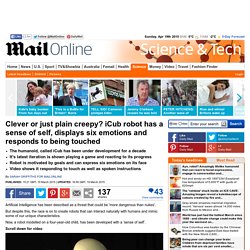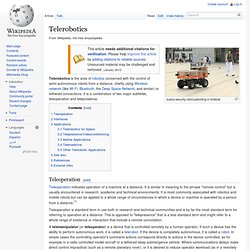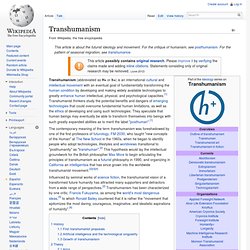

Uncanny valley. iCub robot displays six emotions and responds to being touched. The humanoid, called iCub has been under development for a decadeIt's latest iteration is shown playing a game and reacting to its progressRobot is motivated by goals and can express six emotions on its face Video shows it responding to touch as well as spoken instructions By Sarah Griffiths for MailOnline Published: 15:21 GMT, 19 March 2015 | Updated: 16:50 GMT, 19 March 2015 Artificial Intelligence has been described as a threat that could be 'more dangerous than nukes'.

But despite this, the race is on to create robots that can interact naturally with humans and mimic some of our unique characteristics. Now, a robot modelled on a four-year-old child, has been developed with a ‘sense of self’. Scroll down for video A humanoid called iCub (pictured) has been developed with a ‘sense of self’ and is motivated by goals as we;l as being able to express six emotions on its face and even dance ‘That isn’t fair, I should be stronger at video games!’ Opportunity. Telerobotics. Justus security robot patrolling in Kraków Telerobotics is the area of robotics concerned with the control of semi-autonomous robots from a distance, chiefly using Wireless network (like Wi-Fi, Bluetooth, the Deep Space Network, and similar) or tethered connections.

It is a combination of two major subfields, teleoperation and telepresence. Teleoperation[edit] Teleoperation indicates operation of a machine at a distance. It is similar in meaning to the phrase "remote control" but is usually encountered in research, academic and technical environments. Teleoperation is standard term in use both in research and technical communities and is by far the most standard term for referring to operation at a distance. A telemanipulator (or teleoperator) is a device that is controlled remotely by a human operator. Devices designed to allow the operator to control a robot at a distance is sometimes called telecheric robotics. Interfaces[edit] Applications[edit] Telerobotics for Space[edit]
Human Interaction. How Robots Will Change the World - BBC Documentary. Transhumanism. Transhumanism (abbreviated as H+ or h+) is an international cultural and intellectual movement with an eventual goal of fundamentally transforming the human condition by developing and making widely available technologies to greatly enhance human intellectual, physical, and psychological capacities.[1] Transhumanist thinkers study the potential benefits and dangers of emerging technologies that could overcome fundamental human limitations, as well as the ethics of developing and using such technologies.

They speculate that human beings may eventually be able to transform themselves into beings with such greatly expanded abilities as to merit the label "posthuman".[1] History[edit] According to Nick Bostrom,[1] transcendentalist impulses have been expressed at least as far back as in the quest for immortality in the Epic of Gilgamesh, as well as historical quests for the Fountain of Youth, Elixir of Life, and other efforts to stave off aging and death. First transhumanist proposals[edit] Transhumanity.net. Stanford Colloquium: Self-Improving Artificial Intelligence, Stephen Omohundro. Robotics. Cloud Platform: Robot Apocalypse. Resources Connect with us Key topics Information for Shop & buy About IBM Popular links Footer links.

Our Animated World - Wall-E and the Environmental Apocalypse - The Perils of ... Dossier » Our Animated World The Perils of Thoughtless Consumerism by Amarjeet Nayak In an increasingly consumerist and market-driven world where environmental concerns have taken a back seat, Pixar’s Wall-E comes across as a logical pointer towards an apocalyptic future of the earth and its inhabitants.

The futuristic world that the movie projects stems directly from the absolute indifference of the world’s dominant species towards the protection and preservation of its host – Earth. RF Exposure - iPhone 5c. Robot Dreams (Robot, #0.4) by Isaac Asimov — Reviews, Discussion, Bookclubs, ... Robots will steal your job, but that's OK - crowdfunding campaign. Isaac Asimov's "Three Laws of Robotics"
Artificial Intelligence. SIRI RISING: The Inside Story Of Siri's Origins. The world got its first inkling of the quick wit that would make Apple’s Siri an icon during a packed press conference held before an auditorium of tech elite. "Who are you? " an Apple executive asked the assistant. “I am a humble personal assistant,” Siri answered to appreciative laughter. More like humbled personal assistant. That press conference was actually Siri's second coming-out party. Back then, Siri boasted an even more irreverent tone -- and a more robust set of skills.
Ask it about gyms, and Siri sent back a mocking, “Yeah, your grip feels weak.” That was before Apple washed Siri’s mouth out with soap and curbed many of its talents, even as it endowed the assistant with new gifts. As impressive as those talents were, most failed to realize that Apple's version of Siri lacked many of the features once built into the program. As conceived by its creators, Siri was supposed to be a "do engine," something that would allow people to hold conversations with the Internet.
Optic flow. Medical Robotics.